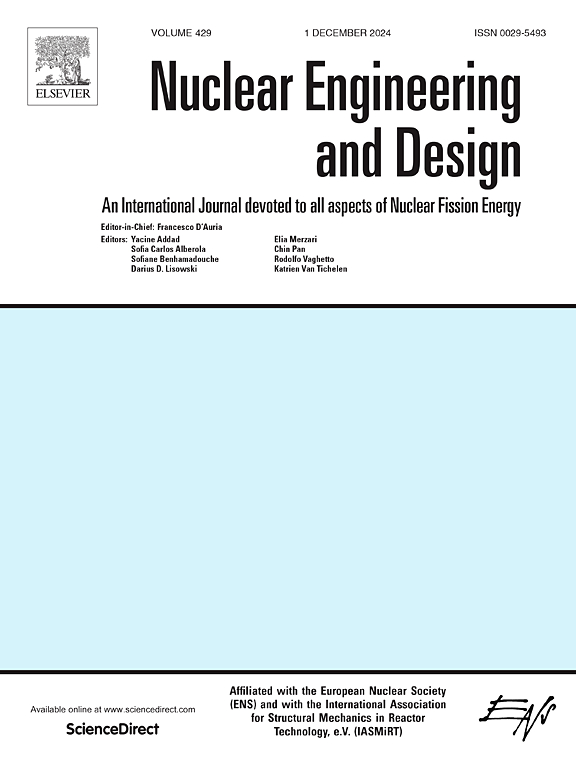Study on the removal behavior of corrosion products by mixed-bed ion exchange column in PWR
IF 1.9
3区 工程技术
Q1 NUCLEAR SCIENCE & TECHNOLOGY
引用次数: 0
Abstract
Accurate analysis and prediction of the removal behaviors of the ionic corrosion products in the mixed-bed ion exchange (MBIE) column in the chemical and volume control system in PWR is significantly necessary for judgement of the coolant quality and the resin bed replacement. In this paper, a film-controlled multicomponent MBIE column model is adopted to investigate the removal behaviors of various cationic and anionic corrosion products. The results suggest that this model can effectively predict the effluent concentration, the saturation adsorption time, and the resin loading. The mass transfer coefficient and ratio of the anionic and cationic resin can impose obvious influence on the estimation of the resin utilization. The larger the mass transfer coefficient is, the shorter the saturation adsorption time, and the lower of the initial effluent concentration. The resin can achieve the maximum utilization when the cationic and anionic reins fails simultaneously.
求助全文
约1分钟内获得全文
求助全文
来源期刊

Nuclear Engineering and Design
工程技术-核科学技术
CiteScore
3.40
自引率
11.80%
发文量
377
审稿时长
5 months
期刊介绍:
Nuclear Engineering and Design covers the wide range of disciplines involved in the engineering, design, safety and construction of nuclear fission reactors. The Editors welcome papers both on applied and innovative aspects and developments in nuclear science and technology.
Fundamentals of Reactor Design include:
• Thermal-Hydraulics and Core Physics
• Safety Analysis, Risk Assessment (PSA)
• Structural and Mechanical Engineering
• Materials Science
• Fuel Behavior and Design
• Structural Plant Design
• Engineering of Reactor Components
• Experiments
Aspects beyond fundamentals of Reactor Design covered:
• Accident Mitigation Measures
• Reactor Control Systems
• Licensing Issues
• Safeguard Engineering
• Economy of Plants
• Reprocessing / Waste Disposal
• Applications of Nuclear Energy
• Maintenance
• Decommissioning
Papers on new reactor ideas and developments (Generation IV reactors) such as inherently safe modular HTRs, High Performance LWRs/HWRs and LMFBs/GFR will be considered; Actinide Burners, Accelerator Driven Systems, Energy Amplifiers and other special designs of power and research reactors and their applications are also encouraged.
 求助内容:
求助内容: 应助结果提醒方式:
应助结果提醒方式:


